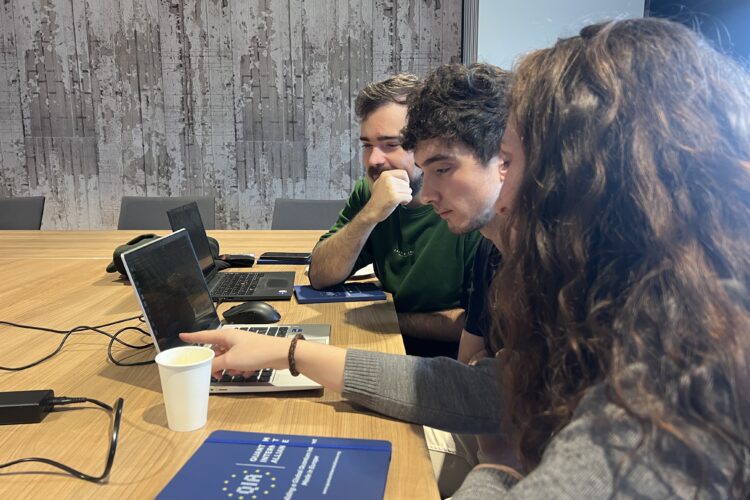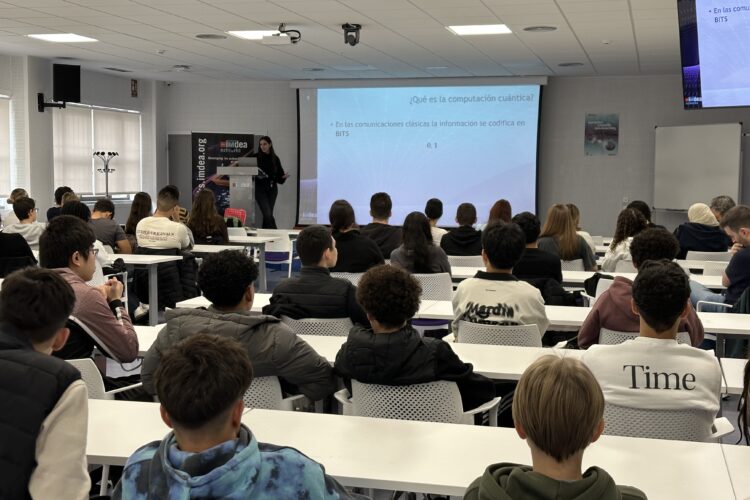IMDEA Networks

Noticias
IMDEA Networks crea una herramienta de marca de agua segura para proteger los datos institucionales
El proyecto europeo DataBri-X, que comenzó en octubre de 2022, ha llegado recientemente a su fin logrando un hito clave:...
Seguir leyendo arrow_right_altUn equipo de IMDEA Networks participa en el Hackathon de la Quantum Internet Alliance 2025
Un equipo de IMDEA Networks participa, en el marco del proyecto regional MADQUANTUM-CM (financiado por la Comunidad de Madrid y...
Seguir leyendo arrow_right_altIMDEA Networks muestra sus avances en el cierre del Plan de Comunicaciones Cuánticas
En el marco del proyecto MadQuantum-CM, IMDEA Networks ha participado en el evento final del Plan Complementario de Comunicaciones Cuánticas,...
Seguir leyendo arrow_right_altSUN-DT avanza hacia la digitalización completa de las plantas termosolares de torre para mejorar eficiencia y reducir costes operativos
El proyecto europeo SUN-DT, en el que participa IMDEA Networks y financiado por Horizonte Europa, ha arrancado oficialmente sus actividades...
Seguir leyendo arrow_right_altIMDEA Networks recibe la visita del alcalde de Leganés
IMDEA Networks ha recibido este miércoles la visita del alcalde de Leganés Miguel Ángel Recuenco, quien ha recorrido nuestros laboratorios...
Seguir leyendo arrow_right_alt“Siento que he crecido mucho desde que formo parte de IMDEA Networks”
Entrevistamos a uno de los integrantes de nuestra Red de Alumni, el Dr. Alessio Scalingi. Obtuvo su doctorado en IMDEA Networks...
Seguir leyendo arrow_right_altIMDEA Networks acerca la computación cuántica al alumnado durante la Semana de la Ciencia y la Innovación
Un año más, IMDEA Networks abre sus puertas al alumnado con motivo de la Semana de la Ciencia y la...
Seguir leyendo arrow_right_altAlbert Banchs, reconocido con el premio Donald L. Hings por sus contribuciones a las comunicaciones inalámbricas
Nuestro director Albert Banchs ha sido galardonado con el Donald L. Hings Award en reconocimiento a sus excepcionales contribuciones a...
Seguir leyendo arrow_right_altVinuri Bandara recibe la Google PhD Fellowship por su investigación en seguridad y privacidad en Android
Vinuri Bandara, estudiante de doctorado en IMDEA Networks, es una apasionada de la tecnología. Su compromiso con hacerla más transparente...
Seguir leyendo arrow_right_altNEXTONIC: el laboratorio 5TONIC inicia en su 10º aniversario una nueva etapa para liderar el 6G
El laboratorio 5TONIC, fundado en 2015 por Telefónica e IMDEA Networks como primer espacio de innovación abierta en 5G, ha...
Seguir leyendo arrow_right_alt











Comentarios recientes